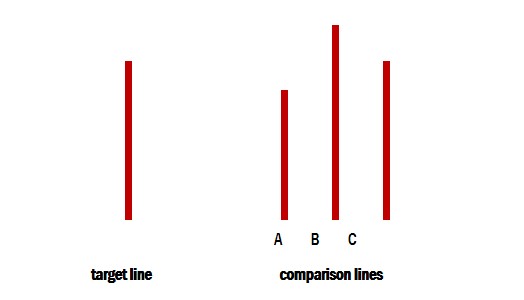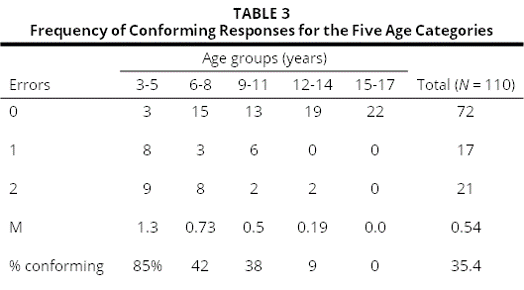Beispiel 1: „Conformity in the Asch task“
In the seminal Asch conformity study, participants complete an easy task: select the one out of three comparison lines that has the same length as a target line (see Figure to the right). However, this task is completed in a group together with others and the participants is always the last to give his or her answer. Unbeknownst to the participants, however, the other group members are confederates of the experimenter: They are instructed to give an unanimous but incorrect answer in a selected set of trials. The central question in this paradigm is to investigate whether the participant gives the same incorrect response as the others (i.e., conforms to their behavior) or gives the correct response (i.e., does not conform). In his original studies, Ash observed that already in small groups with 3 or 4 confederates, approx.. 30% of the responses of the participants conformed to the majority.
When Walker (1996) used such a study design with children and adolescents, his results demonstrated that conformity was inversely related to participants age (see Results Table to the right): Conformity was highest in toddlers and lowest or absent in teenagers. The central question concerns whether or not the participant gives the same incorrect response as the majority (conformity) or the correct response, despite the majority choice (independence). With a majority of three or more confederates, Asch (1956) found that approximately 30 % of the subjects‘ responses on a critical trial were conformists. […]


Auszug aus: Andrade, M.G., Walker, M.B. (1996). Conformity in the Asch Task as a Function of Age. The Journal of Social Psychology, 136(3), 367-372.
